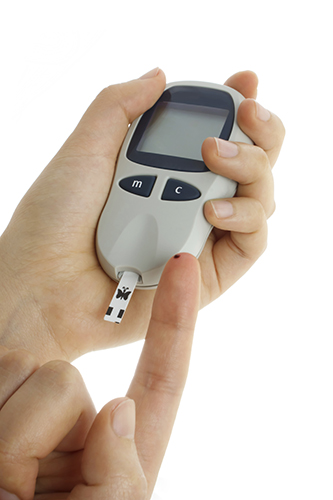
Living with diabetes can become stressful and difficult to handle. Dealing with fluctuating insulin levels affects the body in many ways, however receiving a relaxing massage can make this overwhelming disease seem controllable. Diabetes is the body’s inability to generate any or enough insulin. This produces elevated levels of glucose in the blood. Diabetes is divided into two types: Type 1, it is not preventable and occurs when the body does not produce enough insulin. Type 2, occurs when the body cannot process insulin. Massage therapy has become a tool to help diabetics live with symptoms resulting from diabetic neuropathy, poor circulation and myofascial pain syndrome caused by this disease.
Around 50 percent of diabetics experience diabetic neuropathy or nerve damage. Peripheral neuropathy, the most common form of neuropathy, can cause numbness in the feet. This can become problematic when people are unable to detect injuries and infections, which is one of the reasons why lower limb amputations are more common among diabetics than others. Diabetes also causes poor circulation, particularly in the feet. The blood vessels tighten and harden making it harder for infections to heal.
Massage therapy can have a direct effect on neuropathy and the body’s circulation by facilitating more oxygen-rich blood to flow through the body. It encourages blood to move through congested areas and release lactic acid from the muscles. Massage therapy can raise the body’s pain threshold by triggering endorphin release within the body.
Myofascial pain syndrome can decrease mobility within the body because it affects the muscles and connective tissues. Diabetics often have issues with mobility because elevated blood sugar levels can cause the connective tissues to thicken. As a result, the range of motion in the joints decrease, and they experience a stiffness in muscles, tendons and ligaments. Massage therapy can alleviate the tightness and pain caused by myofascial pain syndrome by targeting the affected muscles. Trigger Point Therapy and Sports Massage can also relieve chronic pain by releasing serotonin and oxytocin in the body.
Diabetics should be cautious when receiving a massage because the calming affects of massage therapy can make them unaware of a serious drop in blood sugar or hypoglycemia. To prevent this from occurring communicate the possibility of hypoglycemia with your massage therapist, and check your blood sugar before leaving the clinic.
Around 50 percent of diabetics experience diabetic neuropathy or nerve damage. Peripheral neuropathy, the most common form of neuropathy, can cause numbness in the feet. This can become problematic when people are unable to detect injuries and infections, which is one of the reasons why lower limb amputations are more common among diabetics than others. Diabetes also causes poor circulation, particularly in the feet. The blood vessels tighten and harden making it harder for infections to heal.
Massage therapy can have a direct effect on neuropathy and the body’s circulation by facilitating more oxygen-rich blood to flow through the body. It encourages blood to move through congested areas and release lactic acid from the muscles. Massage therapy can raise the body’s pain threshold by triggering endorphin release within the body.
Myofascial pain syndrome can decrease mobility within the body because it affects the muscles and connective tissues. Diabetics often have issues with mobility because elevated blood sugar levels can cause the connective tissues to thicken. As a result, the range of motion in the joints decrease, and they experience a stiffness in muscles, tendons and ligaments. Massage therapy can alleviate the tightness and pain caused by myofascial pain syndrome by targeting the affected muscles. Trigger Point Therapy and Sports Massage can also relieve chronic pain by releasing serotonin and oxytocin in the body.
Diabetics should be cautious when receiving a massage because the calming affects of massage therapy can make them unaware of a serious drop in blood sugar or hypoglycemia. To prevent this from occurring communicate the possibility of hypoglycemia with your massage therapist, and check your blood sugar before leaving the clinic.
 RSS Feed
RSS Feed

